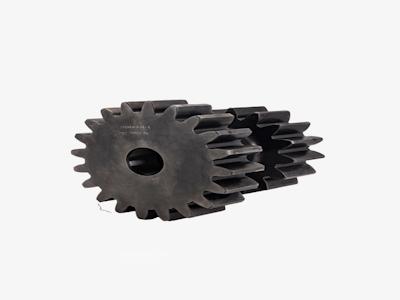



В современной промышленности и строительстве выбор оборудования для резки материалов, особенно металлов, играет crucialную роль в обеспечении эффективности, безопасности и экономичности процессов. Среди широкого спектра инструментов гидравлические и механические ножницы представляют собой два основных подхода, каждый со своими уникальными характеристиками. В этой статье мы проведем детальное сравнение гидравлических и механических ножниц, рассмотрим их ключевые различия, преимущества и недостатки, и сделаем обоснованные выводы о том, почему гидравлические ножницы часто являются предпочтительным выбором. Статья основана на анализе технических параметров, практического опыта и отраслевых тенденций, и предназначена для профессионалов в области металлообработки, строительства и смежных отраслей.
Ножницы для резки металла – это незаменимый инструмент в многих отраслях, от автомобилестроения до судостроения. Они используются для точной и быстрой резки листового металла, труб, проволоки и других материалов. Исторически, механические ножницы, основанные на простых принципах рычага и усилия, доминировали на рынке благодаря своей простоте и низкой стоимости. Однако с развитием технологий гидравлические ножницы, использующие жидкость под давлением для генерации усилия, gained popularity due to their superior performance in demanding applications. Это сравнение aims to provide a comprehensive overview, helping readers make informed decisions based on their specific needs.
Механические ножницы operate on the principle of mechanical advantage, typically through a lever system or gears. When force is applied manually or via a motor, it is transmitted directly to the cutting blades. This design is simple and robust, but it requires significant physical effort for thicker materials. Examples include hand shears, power shears with electric motors, and larger mechanical presses. The key limitation is that the force is limited by the mechanical components, making it less suitable for heavy-duty tasks without substantial investment in size and power.
Гидравлические ножницы use hydraulic fluid to transmit force. A pump generates pressure, which is then directed to a hydraulic cylinder that moves the cutting blades. This system allows for much higher forces with relatively compact equipment, as hydraulic systems can amplify input force efficiently. They are often powered by electric motors, engines, or even manual pumps, offering versatility in various settings. The ability to control pressure precisely enables smooth and controlled cutting, reducing the risk of material deformation or operator fatigue.
Гидравлические ножницы generally outperform mechanical ones in terms of cutting speed and efficiency, especially for thick or hard materials. The hydraulic system can maintain consistent force throughout the cut, leading to faster cycle times. In contrast, mechanical nожницы may struggle with variability in force application, resulting in slower operations. For instance, in industrial settings, hydraulic models can achieve cutting rates of up to 100 cuts per minute, while mechanical ones might be limited to 20-30 cuts per minute for similar tasks.
Precision is a strong suit of hydraulic ножницы due to their ability to control force and movement accurately. This results in cleaner cuts with minimal burrs or distortions, which is crucial for applications requiring high tolerances, such as in aerospace or precision engineering. Mechanical ножницы, while capable of good results, often produce more irregular edges, especially when operated manually. The hydraulic damping effect also reduces vibrations, further enhancing cut quality.
Safety is paramount in any industrial tool. Гидравлические ножницы offer enhanced safety features, such as overload protection and emergency stop systems, which are integrated into the hydraulic controls. The reduced physical exertion lowers the risk of operator injury from strain or accidents. Mechanical ножницы, particularly manual types, pose higher risks of cuts, pinching, or fatigue-related incidents. However, both types require proper training and adherence to safety protocols.
Initially, mechanical ножницы are often cheaper to purchase, making them attractive for small-scale or budget-conscious operations. However, гидравлические ножницы may have lower long-term costs due to higher efficiency, reduced downtime, and longer lifespan. The energy consumption of hydraulic systems can be higher, but advancements in efficient pumps have mitigated this. Maintenance costs are comparable, but hydraulic systems might require more specialized knowledge for repairs.
Гидравлические ножницы are highly versatile and can be adapted for various materials and thicknesses by adjusting pressure settings. They are ideal for heavy-duty applications like shipbuilding or construction. Mechanical ножницы excel in lighter tasks or where portability is key, such as in fieldwork. The choice depends on the specific use case; for example, in a fabrication shop, hydraulic models might be preferred for their adaptability.
Both types are durable, but гидравлические ножницы often have longer service lives due to fewer moving parts subject to wear in the cutting mechanism. The hydraulic components, if maintained properly, can last decades. Mechanical ножницы might suffer from faster wear in gears and linkages, especially under heavy use. Regular maintenance is essential for both to ensure optimal performance.
Гидравлические ножницы may involve hydraulic fluid, which requires proper disposal to avoid environmental contamination. However, modern systems use biodegradable fluids to minimize impact. Mechanical ножницы have a smaller environmental footprint in terms of fluids but might consume more energy if motorized. Overall, both can be environmentally friendly with responsible practices.
Based on the comparison, гидравлические ножницы offer significant advantages over mechanical ones in most industrial scenarios. Their superior force generation, precision, safety, and versatility make them the better choice for heavy-duty and high-precision applications. While mechanical ножницы remain valuable for light tasks or low-budget situations, the trend in industry is toward hydraulic solutions due to their overall efficiency and performance. When selecting equipment, consider factors like material type, volume of work, and available budget. For future developments, expect further innovations in hydraulic technology, such as smart controls and energy-efficient designs, solidifying their position as the preferred option.
In conclusion, гидравлические ножницы are not just a step up from mechanical ones; they represent a evolution in cutting technology that aligns with modern industrial demands. By investing in hydraulic systems, businesses can enhance productivity, improve safety, and achieve better results, ultimately leading to greater competitiveness and success.